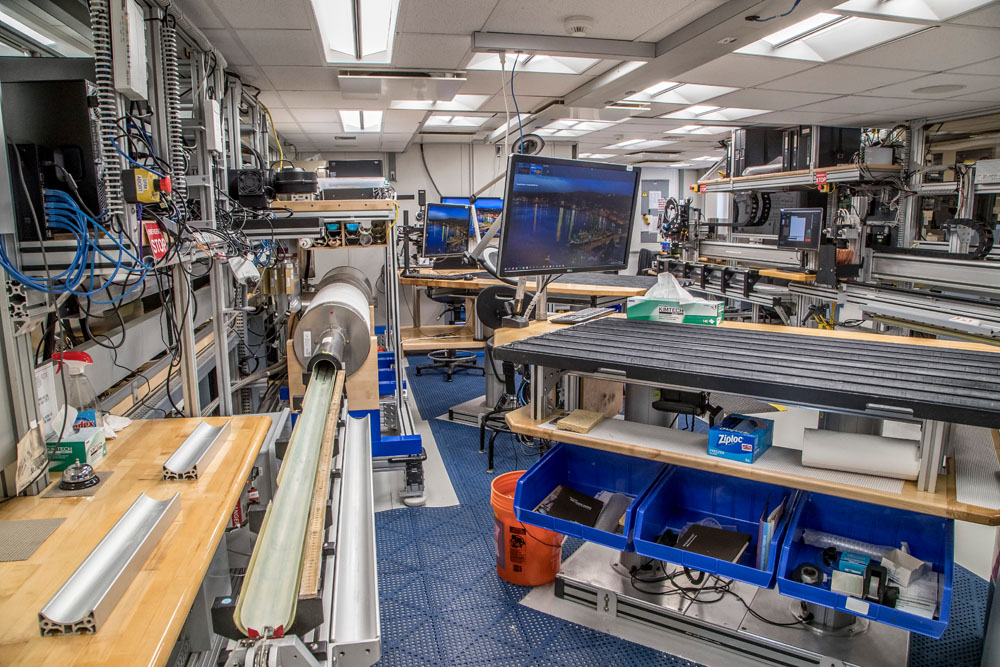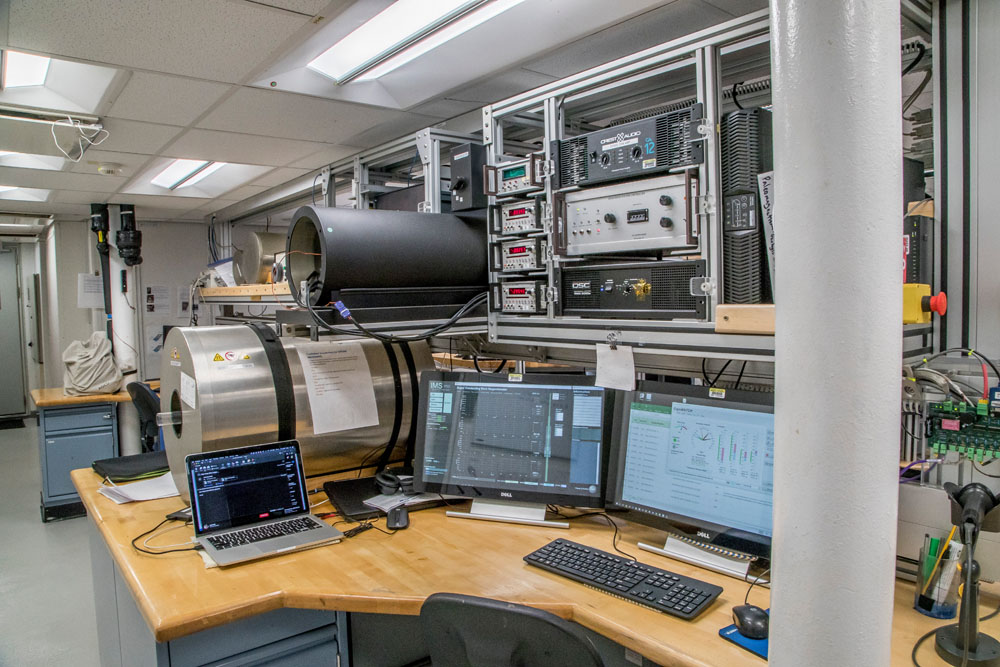Scientific Ocean Drilling Vessel
Paleomagnetism Laboratory
See Laboratory Manuals, Guides, and Resources for Paleomagnetism.
See the Core Deck panoramic virtual tour.
Function
Shipboard paleomagnetists provide paleomagnetic and rock-magnetic measurements of recovered rocks and sediments. The measurements are used to construct a magnetostratigraphy for each site and to study its paleomagnetic and tectonic history. The pass-through cryogenic magnetometer provides high-resolution records required in studies of magnetostratigraphy and magnetic field behavior. An alternating-field (AF) demagnetizer inline with the cryogenic magnetometer can demagnetize cores up to 80 mT, which, in most cases, is sufficient to remove secondary magnetization. Shipboard paleomagnetists also take discrete samples that can be demagnetized either thermally or at alternating fields up to 100 mT. These results can then be compared to the archive-half results to determine whether secondary magnetization components were adequately removed. More...
Instruments
- 2G 760-4K helium-free superconducting cryogenic rock magnetometer (SRM)
- DTECH D-2000 AF demagnetizer/partial anhysteretic remanent magnetizer
- ASC TD-48 thermal demagnetizer
- Agico KappaBridge KLY-4S magnetic susceptibility meter
- ASC IM-10 impulse magnetizer
- Agico JR-6A spinner magnetometer
- Applied Physics portable three-axis fluxgate magnetometer
- Minex FlexIT orientation tool
- Icefield MI-5 orientation tool
- Please note that proprietary manuals are available upon request and subject to limited use
The 2G 760R superconducting cryogenic magnetometer is used primarily for continuous remanent magnetization measurements on archive halves of cores. AF coils arranged on-axis with the magnetometer and set within the magnetometer’s mu-metal shielding allow uniform demagnetization of the cores, so that both the natural remanent magnetization (NRM) and demagnetized remanences can be measured. The cryogenic magnetometer may also be used to measure discrete samples.
A DTECH D-2000 AF demagnetizer and partial anhysteretic remanent magnetizer (PARM) is available for ARM and PARM studies on discrete samples.
A ASC TD-48 thermal demagnetizer is used for thermal demagnetization of rock samples over a temperature range of 25° to 800°C. The instrument contains magnetically shielded heating and cooling chambers.
A KappaBridge KLY-4S magnetic susceptibility meter measures magnetic susceptibility and anisotropy of magnetic susceptibility at sensitivities of 0.05 to 200,000 × 10−6 SI. Because the ship is a magnetically noisy environment, the sensitivity is less than in shielded rooms in shore-based labs but is sufficient for most shipboard purposes.
An ASC IM-10 impulse magnetizer is available for studies of the acquisition of isothermal remanence (IRM) and anistropy of IRM.
Other equipment includes a Agico JR-6A dual-speed spinner magnetometer and an Applied Physics portable three-axis fluxgate magnetometer.

